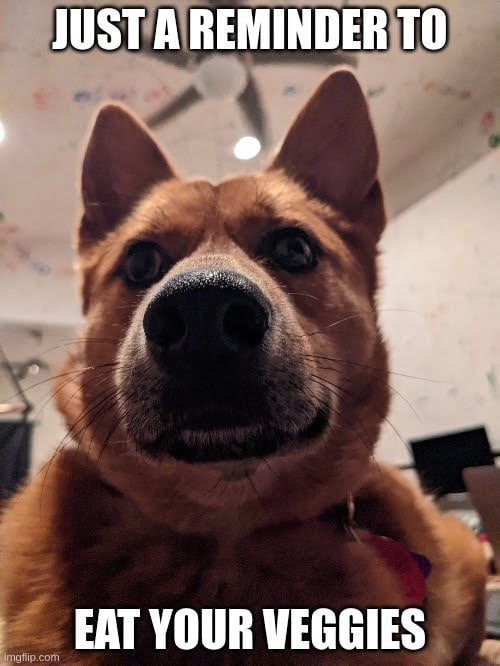

Well I’m guessing they actually did testing on local AI using a 4GB and 8GB RAM laptop and realized it would be an awful user experience. It’s just too slow.
I wish they rolled it in as an option though.


Well I’m guessing they actually did testing on local AI using a 4GB and 8GB RAM laptop and realized it would be an awful user experience. It’s just too slow.
I wish they rolled it in as an option though.


I hope so. I don’t want to manage two different address spaces in my head. I prefer if one standard is just the standard.
Display and layout rules aren’t difficult at all. Maybe I’m just not experienced enough. I’ve been a web dev for nearly a decade now and I feel like I’ve got the hang of it. That being said, I don’t work on projects that have to work on everything from a Nokia to an ultra wide monitor. We shoot for a few common sizes and hope it clears between edge cases nicely. What is an example of something that wraps randomly?
Genuinely, though, CSS is fairly clear cut about the rules of positioning and space. Relative positioning is one of the most important concepts to master since it allows things to flow via the HTML structure and not extra CSS. Fixed positioning is as if you had no relative container other than the window itself. Absolute positioning is a little weird, but it’s just like fixed positioning except within the nearest parent with relative positioning.
Everything else is incredibly straight forward. Padding adds space within a container. Margins add space outside a container. Color changes text color. Background-color changes the background color of an element.
Top, left, right, and bottom dictate where the element should be positioned after the default rules are applied. So if you have a relative div inside a parent which is half way down the page, top/right/left/bottom would move the element relative to it’s position within the parent. If you made the div fixed, it would be moved relative to the window.
Lastly, if you’re designing a webpage just think in boxes or rows and columns. HTML can define 75% of the webpage structure. Then with just a bit of CSS you can organize the content into rows/columns. That’s pretty much it. Most web pages boil down to simple boxes within boxes. It just requires reading and understanding but most people don’t want to do that to use CSS since it feels like it should just “know”.
As someone who has built QT, Swing, and JavaFx applications, I way prefer the separation of concerns that is afforded us via HTML JS and CSS.
Source for the whole kidnapping aspect?
We’re getting closer and closer to wrapping back around and just having community. Just remove the sex aspect and boom you got a community going.
I tried it so you don’t have to. It didn’t work.


If you want to build stuff but are struggling to motivate yourself, take a walk or go exercise and stop thinking about it for a bit. Sometimes that helps me. I’m in the same boat. I tend to work on a lot of things but I have a treasure trove of 10%-50% completed projects.
Lately, I’ve used ChatGPT 3.5 to help me figure out ideas or work through places I’m stuck.
I’ve gone to 4 conferences in the past 6 months. Most of the open source devs there that made big waves in the community are actually doing their jobs and their company open sourced their work. React, by way of example, is a Meta project that was open sourced.
So, sometimes, the intimidating projects have someone working full-time on them. So don’t feel like you should try to accomplish that.
As other people said, if you end up not being interested in doing development in your free time, don’t worry about it. It’s normal and fine to just go home and enjoy your life.


I hate the B-side. Alice 4 fingers - Finger guns.
I thought “Patches” was ok though.
It’s always either:
I guess this is why I have a wife.
#moustache {
position: absolute;
bottom: 10px;
margin: 0 auto;
}
If that doesn’t work:
#moustache {
position: absolute;
bottom: 10px;
left: 50%;
transform: translateX(-50%);
}
Relative positioning is preferred but not always available if the parent face is positioned absolutely.
Edit: adjusted bottom from 0 -> 10px since 0 would be at the bottom of the chin but there is obviously some padding to bring it nearer the lip


Based solely on that quote, I whole heartedly agree. Science fiction is almost always supposed to expose something about our world through a different lens. Whilst it’s not the most elegant example, the two black & white striped races in TOS arguing over “black-white stripes vs white-black stripes” was a clear allegory for racism in our country when the show came out. District 9 is a decent allegory for something like Gaza & Israel: open air prisons and what-not.
Science fiction should (IMO) make the muddy waters of morality more clear.
A more nuanced example comes from Battlestar Galactica; wherein the human members of a concentration camp use suicide bombing as a means of rebellion. The show made sure to imply the efficacy of suicide bombing. It also made sure to expose the arguments against it. But I think during a post 9/11 world, suicide bombing was looked at as the root of all evil. Perpetrators were seen as aimless villains without a cause or reason (without a rational one, anyways). But BSG did make a compelling argument for such extreme cases of terrorist violence when your back is up against the wall.
The bajorans in DS9 also make cases for terrorism as an act of rebellion against colonizers.
I think science fiction is one of the only genres they really take a look at these topics. Other genres seem to only gleam the very tips of the morality iceberg.


I feel like that would be a great idea!


500+ people for a videogame is insane. That’s kind of cool - despite the problems they faced. I feel like these games don’t reflect the number of people being hired for them. I’m not sure it should linearly scale (probably not), but they seem like they scale down rather than up with an increase in staff.
I feel like modern producers are missing the forest for the trees. Games are not successful for being infinitely large. Skyrim is small by today’s standards. So is Oblivion. So are hundreds of other contemporary indie games that have captured the hearts of thousands.
It’s not about more content. It’s about content that feels deeper. Depth over breadth. Baldurs Gate 3 proves that out. I don’t think you can expect these large groups of 500 people to all work towards a deeper game without major changes in roles. I’m no expert by any means, but I am a software engineer with some side-hobby game development experience. I think games are flat because mechanics aren’t growing with the power. We’re getting graphics, dialogue, and places. But the places aren’t any more “deep” than 5 years ago. The dialogue isn’t more interesting. The graphics are nice - but hardly why people buy games. I want to capture the “anything is possible” feeling when I hop into a game. BG3 recaptured that illusion for me for a long time.
/Rant
TL;Dr developers can’t throw more bodies at this problem. It’s an artistic and structural problem. They need to reframe how they create the art. It can’t be mass produced without ending up flat.


Oh that’s kind of cool.


I know 7 is traditionally a lucky number, but is there any other reason the writers chose 7?
Super Mario 64 has some weird ones like that. I think you slam yourself into a corner walking backwards or something and that gives you super speed to skip through some levels. There is this whole “quantum Mario” stuff in the game.


Blue Bloods is the worst of them. Flat out abusing people in custody followed by a friendly family Sunday dinner.
People don’t like to admit that we are ants. We are valuable and important. Each one of us is unique and deserves a full, good, life. But we are also ants. We are susceptible to group think, mob behavior, and we tend to follow the scent trail most of the time. It’s not a bad thing. It’s tied to our evolutionary desire to be a part of a community; to fit in and blend in.
But it also means individuals are likely to do what keeps them alive. We are likely all bad in some way or another.
But as long as you aren’t, actively, willfully, or gleefully harming people, you’re probably ok.